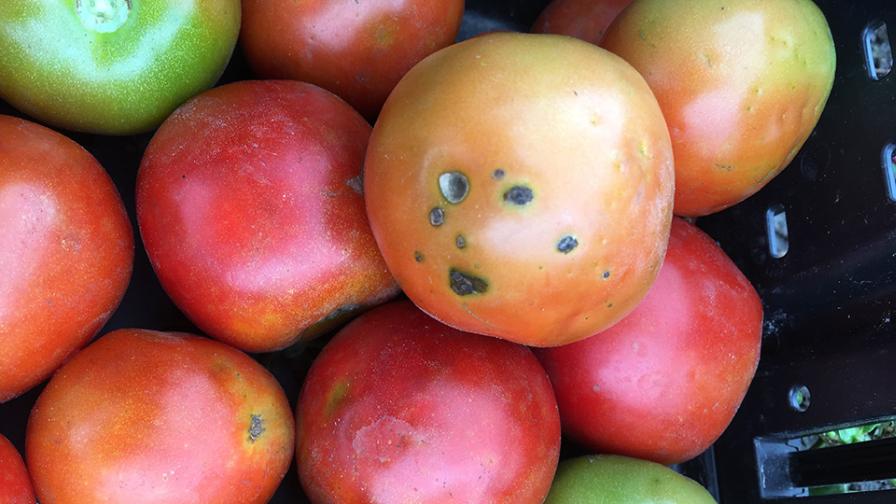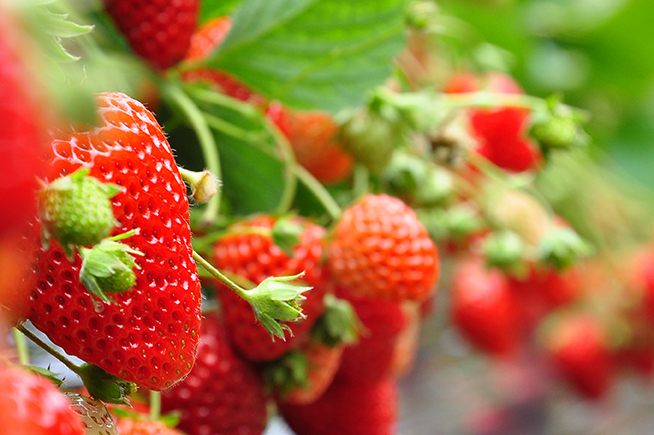Why Tomato Crops Today Are So Susceptible to Disease
Why are tomatoes so susceptible to disease? Of three possible answers — aggressive pathogens that specialize on tomato, the tomato plant itself, or the growing environment — it’s not the pathogens.
For example, early blight and late blight can be equally destructive on tomato and potato. Phytophthora blight and fruit rot is worse on pepper than tomato. Is there something about the tomato that makes it inherently susceptible, something medical doctors call a congenital defect? Or is it weather conditions during the growing season? The answer seems to be both.
Same Chromosome Controls Resistance and Size
Tomatoes were domesticated in Southeast Mexico from a wild tomato that resembles a small cherry tomato. The cherry tomato ancestor originated in the humid Amazon rainforests of Northeast Peru and then spread to the Yucatan Peninsula of Mexico, according to a 2020 article in the highly regarded scientific journal Molecular Biology and Evolution.
San Martin, Peru, where ancestral tomatoes still grow wild, is humid with 6 to 13 inches of rain per month, year-round. So, tomatoes should be suited to cropping in humid environments.
But something happened in the chase for larger fruit. Early Mesoamericans who domesticated tomato, as well as modern plant breeders, produce buyers, and consumers wanted large tomato fruit. The average size of a fruit doubled as tomato developed into what passes for an early modern tomato.

Bacterial spot is one of multiple tomato pathogens to be aware of. Susceptibility is linked to genes for large fruit and high yield.
Photo by Zack Snipes
Unfortunately for today’s tomato growers in the Eastern U.S., large-fruited tomato plants are susceptible to a variety of bacterial diseases. That includes bacterial wilt and bacterial spot.
The genes in wild tomatoes that make them resistant to bacterial diseases are found on the same chromosome as genes that control fruit size and yield.
That’s why the resistant offspring of a cross between a tomato parent with decent-sized fruit (but susceptible to bacterial diseases) and a resistant parent (but with small fruit) always have fruit that are too small for current tastes.
Allow Breathing Room
Another likely reason for the prevalence of tomato diseases is our modern, intensive production practices.
Most staked tomatoes are grown with 6 feet between rows and 2 feet between plants. That’s tight spacing for full-grown tomato plants, even after “suckering” to leave only two main side branches.
The large fruits — unlike the original cherry-sized fruits — are too heavy for tomato plants to support without aid from the stake-and-tie production system that originated in the Southeast.
Stringing a mass of foliage together creates humid microclimates perfect for pathogens. On humid summer days, or after a downpour, the inner leaves of the canopy may never dry completely. Continuously wet leaves allow bacteria, fungi, and water molds like late blight to grow continuously — just like they do in a petri dish in the lab.
Simply giving tomatoes more space may be enough to reduce foliar diseases.
A local organic grower spaces tomato rows 12 feet apart instead of the standard 6 feet. This farm had less bacterial spot than nearby conventional farms.
He sprayed the recommended organic products, copper plus Serenade (Bayer Crop Science), while conventional growers sprayed the recommended conventional products, copper plus mancozeb. Both spray programs are moderately effective, so one likely reason for seeing less bacterial spot on the organic crop was the wider row spacing.
Protect Plants from Rain
High moisture in the form of rainfall also damages tomatoes. The processing tomato industry is concentrated in California’s Central Valley. Rainfall there is only five to 20 inches per year. That’s half the annual precipitation in the Midwest, where processing tomato acreage has declined since the 1990s.
One way to protect tomatoes from too much rain is to grow them under high tunnels. Based on a trial at Kansas State, tomato fruit from high tunnels had less postharvest fruit rot and could be stored longer than field-grown tomatoes.
The high tunnel environment also reduces gray leaf spot on the very susceptible heirloom ‘Cherokee Purple’.
In Florida, fruit cracking and decay of beefsteak tomato was consistently two-thirds lower in high tunnels than in the field.
In both locations, the plastic covering of the high tunnel keeps the leaves and fruit dry during rain and protects them from rain-splashed pathogen spores.
Although wild tomato is native to the humid tropics, modern descendants perform better in drier natural or man-made environments.










